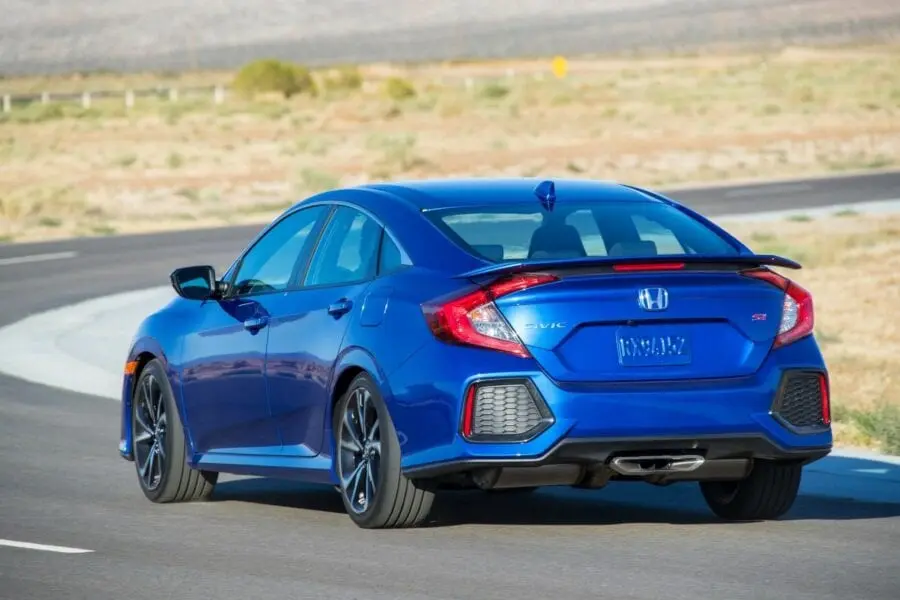
The most famous design elements in the automotive industry
Content
Not every designer can draw a beautiful car of correct shapes and proportions. And the creation of a legendary car and the entry of the name into history is entrusted to a few.
Today we will tell you about the famous graduates of the faculties of industrial design, who have achieved the greatest success.
Hofmeister Curve (Wilhelm Hofmeister)
This stylistic element, inherent in all modern BMW models (with rare exceptions), is considered by many to be the work of Wilhelm Hofmeister, who was responsible for the design of the Bavarian brand from 1958 to 1970. This bend first appeared in the 3200CS coupe created by Bertone in 1961.
Initially, this artistic element had a purely functional meaning, as it strengthens the stands, makes them more beautiful and improves the look. It then became a BMW trademark and even found its place in the brand's logo. This decision was revived in 2018 on the X2 crossover.
Curiously, a similar C-pillar shape is found in other brands, even before Hofmeister used it. For example, the 1951 Kaiser Manhattan and the 1959 Zagato Lancia Flaminia Sport. The same element is present in Saab models, but it resembles a hockey stick.

"The Nose of the Tiger" (Peter Schreier)
The flat center grille, found in all current Kia models, was unveiled to the public at the 2007 Frankfurt Motor Show. It made its debut on the Kia concept sports model (pictured) and is in fact the debut work of the company's new chief designer, Peter Schreier.
It was a graduate of the Royal College of Art in London who developed the Kia identity from scratch, linking the front of the car to the face of a predator. The tiger was chosen by Schreier because it is a well-known image that also symbolizes strength and agility.

"Dynamic Line" de Silva (Walter de Silva)
One of the greatest geniuses of automotive design, he first worked for Fiat and Alfa Romeo, and then for Seat, Audi and Volkswagen, as the author of a number of famous models. Among them are Fiat Tipo and Tempo, Alfa Romeo 33, 147, 156, 164, 166, sports Audi TT, R8, A5, as well as the fifth generation VW Golf, Scirocco, Passat and many others.
Maestro comes up with an element that he creates for Seat. It is called De Silva's "Dynamic Line" and is a striking relief detailing from the headlights to the rear fenders of the Seat models. This has been seen in previous generations of Ibiza, Toledo, Altea and Leon. All cars by De Silva have a minimalistic exterior design.

X-style (Steve Matin)
The British graduate of Coventry University owes as many famous models to the automotive industry as to the other designers on the list. Steve works for Mercedes-Benz and Volvo, becoming practically the "father" of all the German company's models released at the turn of the century - from the A-Class to the Maybach.
At Volvo he is credited with the 40 S50 and V2007 models. He also created the drop headlights with an additional section in the radiator grille, which are used on the S60 and XC60 concept models.
In 2011, Matin became the chief designer of AvtoVAZ, creating a new corporate identity for the Russian company from scratch. It appears in the form of the letter "X" on the sides of Lada X-Ray and Vesta, and then on other AvtoVAZ models, without (at least for now) Vesta and Niva.

Czech crystal (Josef Kaban)
Before committing to Volkswagen for a long time, the Slovak designer graduated from the High School of Fine Arts in Bratislava and received a master's degree from the High School of Art in London. Boar then participated in the creation of a number of models of the German manufacturer - from the Volkswagen Lupo and Seat Arosa to the Bugatti Veyron, but gained worldwide fame as the main stylist of Skoda.
Under his leadership, the first crossover of the Kodiaq brand, the last Fabia and the third Octavia were manufactured, including its scandalous failure. The current Superb also goes to Kaban, whose styling has been dubbed "Czech crystal" for playing with the complex shape of the car's optics.

Soul of Movement (Ikuo Maeda)
60-year-old Ikuo Maeda is a hereditary designer, and his father Matsaburo Maeda was the author of the appearance of the first Mazda RX-7. This defines Ikuo's 40-year career as a graduate of Kyoto Technical University. During this period, he worked not only for Mazda at home, but also for Ford in Detroit (USA).
The designer is known as the father of the sporty RX-8 and the second-generation Mazda2, but his greatest merit is the creation of the Kodo design company (literally translated from Japanese, it means “soul of movement”. Maeda became the brand’s chief designer in 2009 and the result of his many months of effort is Shinari concept sedan (pictured).
The sculptural shapes of the large and low 4-door engine, the rear-facing sedan and the play of light on the body surfaces are used in all current Mazda models.

Controversy (Ken Greenlee)
It is not necessary to create real masterpieces to write your name in history. You can do the exact opposite - draw cars with a rather controversial design, for example, for the early models of the Korean brand SsangYong.
The design of the Musso SUV, its successor Kyron, and Rodius (which many call "Urodios") is by British designer Ken Greenlee, who also graduated from the Royal College of Art. However, this can hardly serve as an advertisement for a prestigious school.

